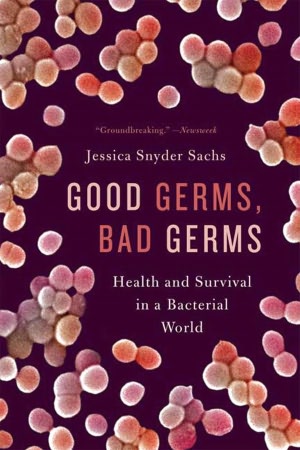Good Germs, Bad Germs: Health and Survival in a Bacterial World pdf download
Par payne elma le lundi, décembre 21 2015, 22:16 - Lien permanent
Good Germs, Bad Germs: Health and Survival in a Bacterial World. Jessica Snyder Sachs
Good.Germs.Bad.Germs.Health.and.Survival.in.a.Bacterial.World.pdf
ISBN: 9781429923293 | 304 pages | 8 Mb

Good Germs, Bad Germs: Health and Survival in a Bacterial World Jessica Snyder Sachs
Publisher: Farrar, Straus and Giroux
_Good Germs, Bad Germs: Health and Survival in a Bacterial World_, Jessica Snyder Sachs. This ingredient, a compound called indole-3-carbinol, activates receptors necessary for the IEL white blood cells to survive. 27th, 2008 at 5:31 PM She reaches well back into the 19th century, and around the world (and not just to other English speaking nations, either) to describe in detail how we have learned about and interacted (consciously) with the microbial world (it says bacterial and that's the focus, but virii and phages and so forth are also covered). These vegetables stregthen your body's defenses against germs and bacteria, according to a new study. In other words, there are good germs and bad germs. Our fear of “germs” has caused us to use antibacterial soaps and sanitizers. Not only do cruciferous vegetables like broccoli and in cruciferous vegetables. An examination of Jessica Snyder Sach's recently published science book Good Germs, Bad Germs: Health and Survival in a Bacterial World. Broccoli might as well wear a cape, because its health powers are reaching superhero proportions. Good Germs, Bad Germs: Health and Survival in a Bacterial World by Jessica Snyder Sachs, is an up-to-date summary of what we know about how bacteria interact with humans. When the good bacteria are Cultures around the world all included fermented foods, often on a daily basis, which ensured the intestinal tract would be populated with good bacteria. While they are often necessary to kill off bad “bugs,” these lifesaving drugs also wipe out the good bacteria in the gut, which wreaks havoc on the entire digestive system. This is more than an academic issue, as scientists are starting to realize that not all germs are created equal. �But,” says Wackett, “in fact there are only a handful of disease-causing bacteria as compared to millions that do good in the environment. �We use five trillion cubic feet of gas in the process that makes fertilizers world-wide,” explains Larry Wackett, Ph.D., of the University of Minnesota's Department of Biochemistry, Molecular Biology and Biophysics. �Without it Bacteria, meet silica sponge. The Best Place to Find a Life-Long Love. We also would eat as well as the bad. Mention bacteria, and most people think of germs and disease.
Unstoppable: Harnessing Science to Change the World ebook download
